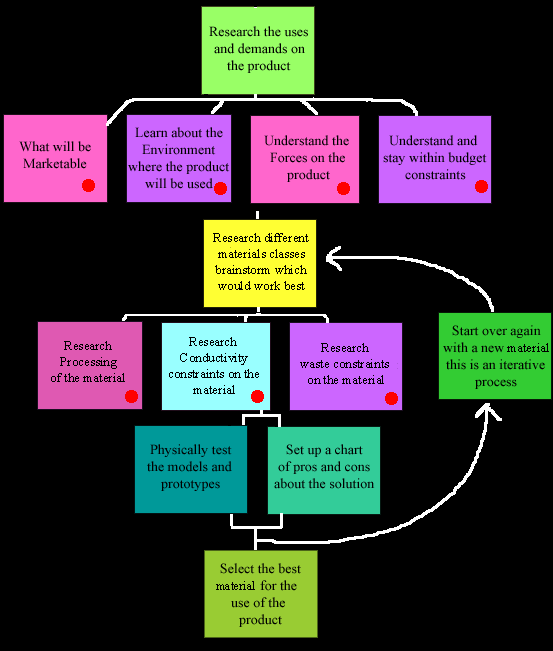The Design Process for You

Image from http://fp.aleveldt.f9.co.uk/materials.htm
The design flow chart can be used for a complete overhaul of a product, or used to develop a product from scratch. Your project is to focus particularly on the materials aspect of the design, and then change any structural aspect later if needed.
You will be in a group of three students. You will work together as a team to make decisions, but each one of you will be an expert in a different materials class. You should decide who will be learning about metals, ceramics, and polymers and composites, and who will be the drafter, the communicator and the arbitrator. Click on this link for job descriptions for your group.

